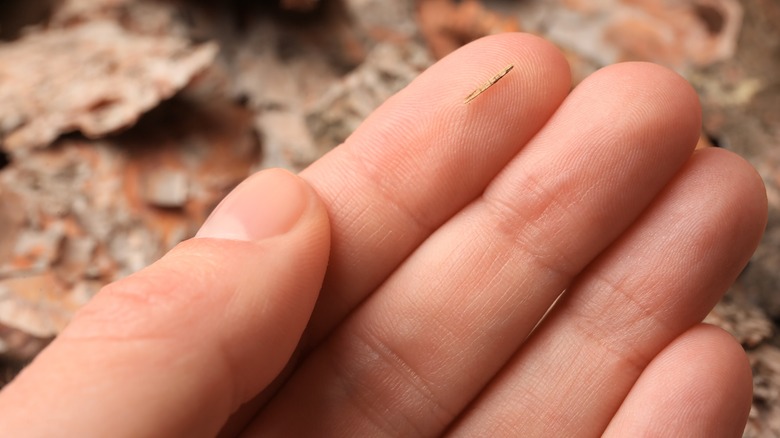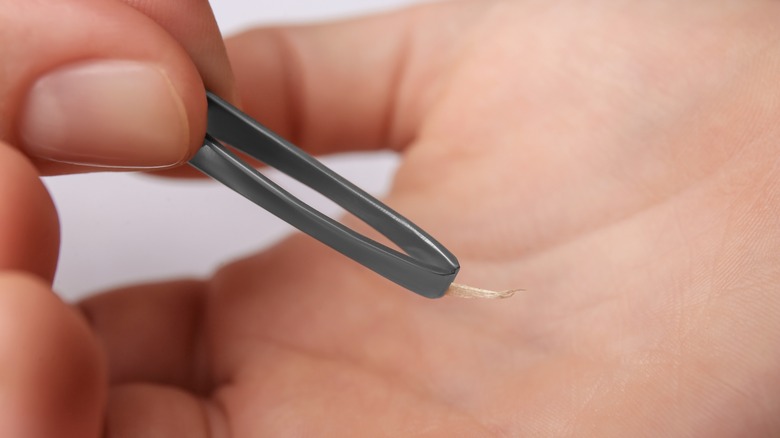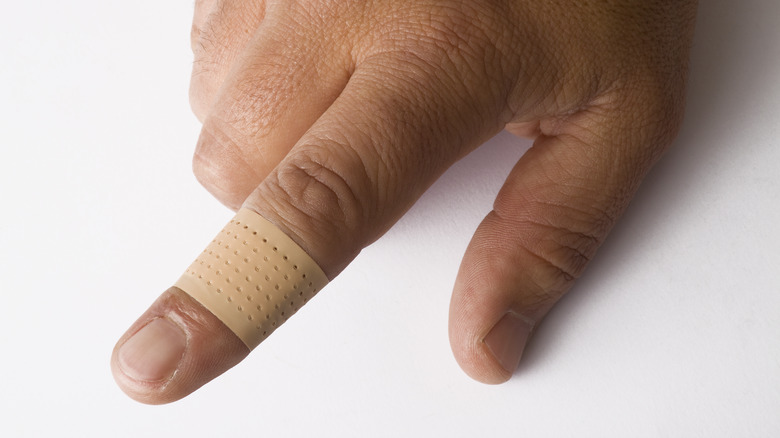How To Remove And Treat Splinters Properly
Few sensations rival the discomfort of a tiny splinter nestled beneath the skin's surface. Whether it's a wooden sliver from a day at the park or a metal shard from a home improvement project, splinters can easily turn a pleasant day sour. Even though splinters are small, they can cause a lot of trouble. Ignoring a splinter can lead to infections, swelling, and even abscesses. While your body tries to push out foreign objects like splinters, it doesn't always do it quickly or well. Sometimes, splinters can get stuck deep in your skin or in sensitive places where your body can't get rid of them easily.
On top of that, it's a common misconception that all splinters are created equal. In reality, splinters made from different materials can cause different levels of harm and problems. For instance, wooden splinters, particularly those from untreated or dirty wood, pose an increased risk of infection due to the presence of bacteria and other microorganisms. Metal splinters, such as those from nails or screws, can introduce foreign substances into the body, potentially leading to adverse reactions. Additionally, splinters from glass or fiberglass can break upon entry, exacerbating the risk of injury and complicating removal. That's why it's important to treat a splinter as soon as possible like you would a cut, so that you can avoid an infection.
While small, superficial splinters can often be managed at home, larger or deeply embedded splinters may require professional care, especially if they are in sensitive areas. Here's a comprehensive guide on how to remove and treat splinters properly.
Sterilize, soak, and squeeze
If you're removing the splinter yourself, it's best to have a pin or needle, tweezers, rubbing alcohol, antiseptic cream, and adhesive bandages. If you don't have all that on hand, tweezers and soap are a must, at the very least. Ensuring that everything is sterile is crucial to minimize the risk of infection. This includes sterilizing tweezers and needles with rubbing alcohol and washing your hands and the affected area with soap and water first. After washing, gently pat the area dry with a clean towel to prevent pushing the splinter further into the skin.
Once you're prepared, soak the affected area in warm water for a few minutes. This helps soften the skin and makes it easier to remove the splinter. Soaking can also help alleviate discomfort during the removal process.
While many of us might instinctively try to remove the splinter with our hands, Dr. Alan Greene advises against this (via Mount Sinai). Our fingers, no matter how dainty, could push the splinter deeper into the skin. Instead, if the splinter is lying flat against the skin, use a pin or needle to lift it slightly. Once there's enough length to grip, use tweezers to grasp the splinter and pull it out in the same direction it entered. Avoid using too much pressure, as this could break the splinter, making it harder to remove. If you're unable to remove the splinter or if the area becomes infected, it's important to seek medical attention. A healthcare professional can safely remove the splinter and may prescribe antibiotics if necessary.
Aftercare is important too
After successfully removing the splinter, it's crucial to provide proper aftercare to ensure the wound heals effectively and minimize the risk of infection. Begin by cleaning the wound with rubbing alcohol or hydrogen peroxide to thoroughly disinfect it. Gently apply pressure with sterile gauze to stop any bleeding that may occur during the removal process.
Once the wound is clean and dry, apply some antiseptic cream to the area. Not only does this help prevent infection, but it also soothes the surrounding skin and promotes healing. After applying the cream, cover the wound with a sterile adhesive bandage to protect it from dirt and bacteria. Changing the bandage daily and monitoring the wound for any signs of infection, such as redness or swelling, is essential for proper healing; remember, a splinter, no matter how small, is still an open wound. If you notice any adverse reactions around the splinter, such as severe redness or swelling that persists, it is best to see a medical practitioner. There is a chance you have contracted an infection, and they can advise you on the best course of action.
In addition to providing immediate aftercare, it's crucial to take steps to prevent future splinters. When working with materials like wood or metal that can cause splinters, always wear protective gloves to shield your hands. Keep your living and workspaces clean and clutter-free to minimize the risk of accidents and reduce the likelihood of encountering splinters in the future.


